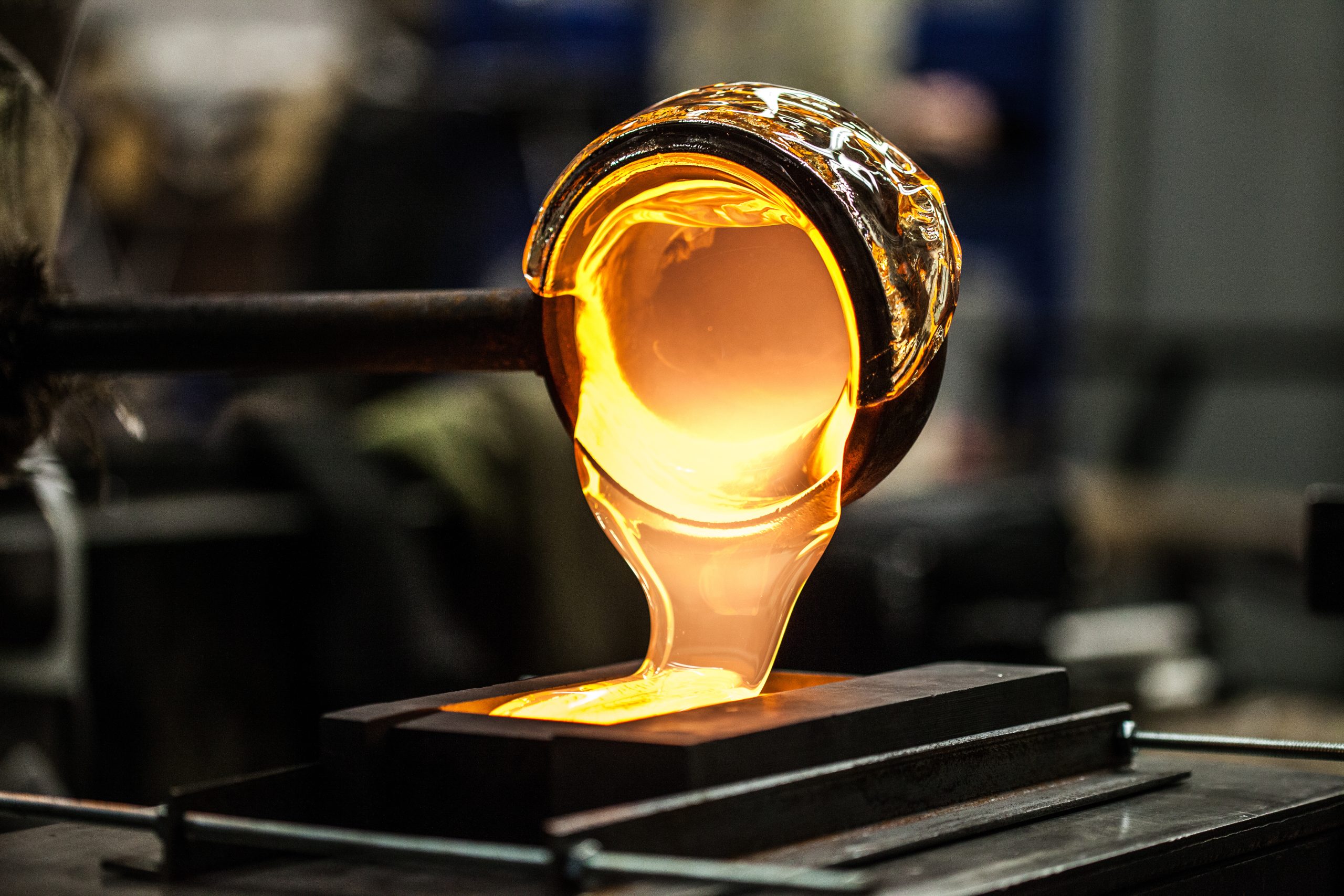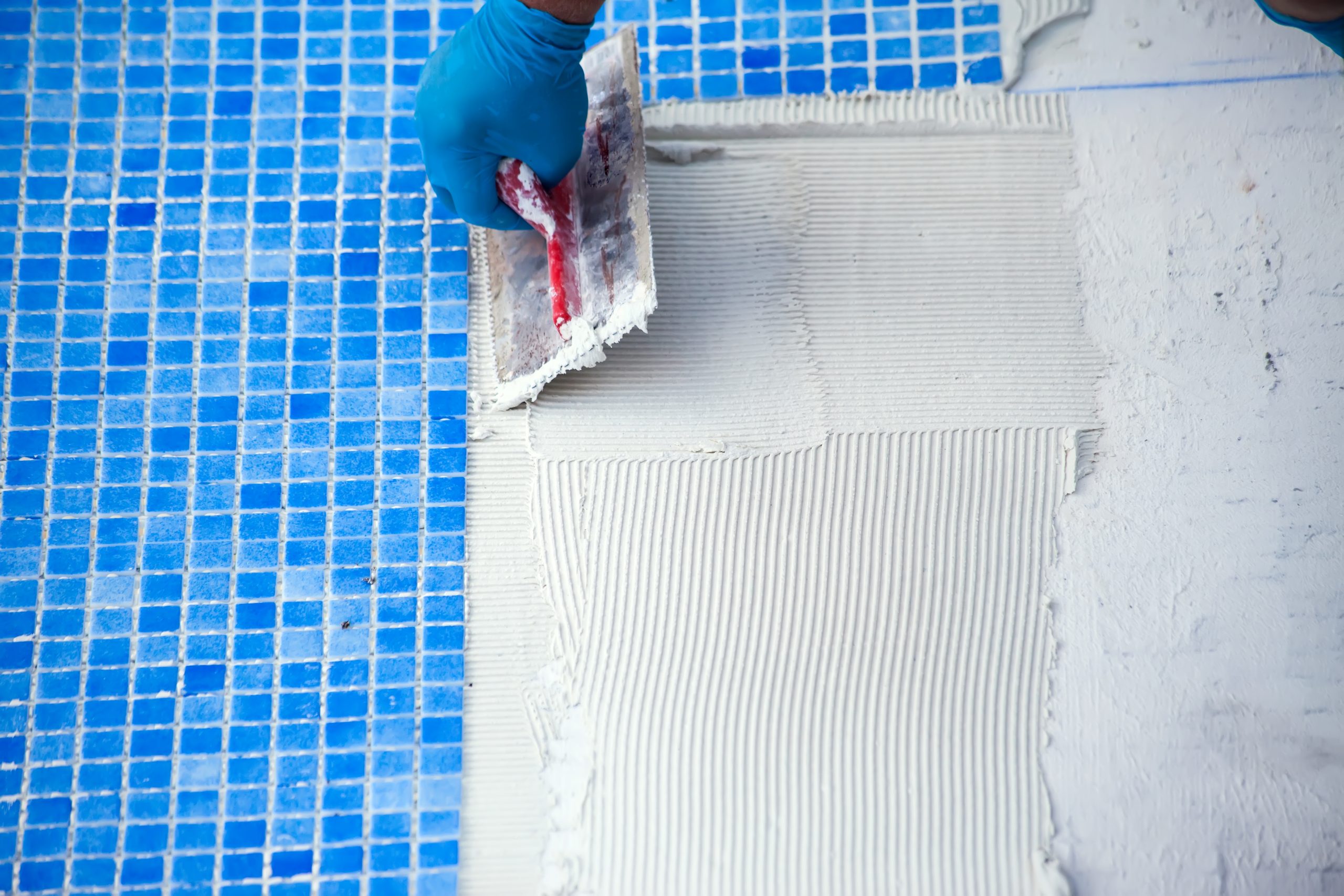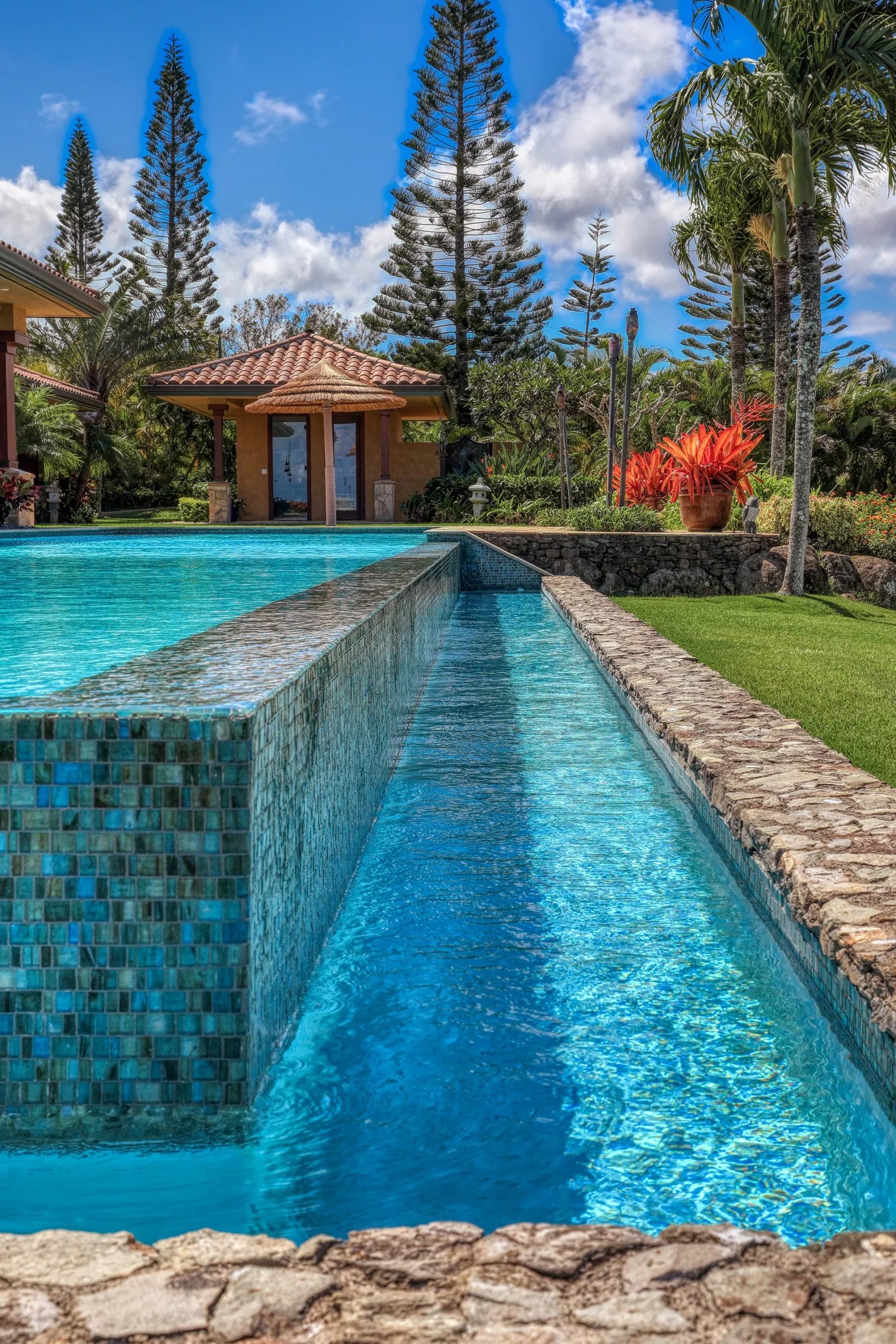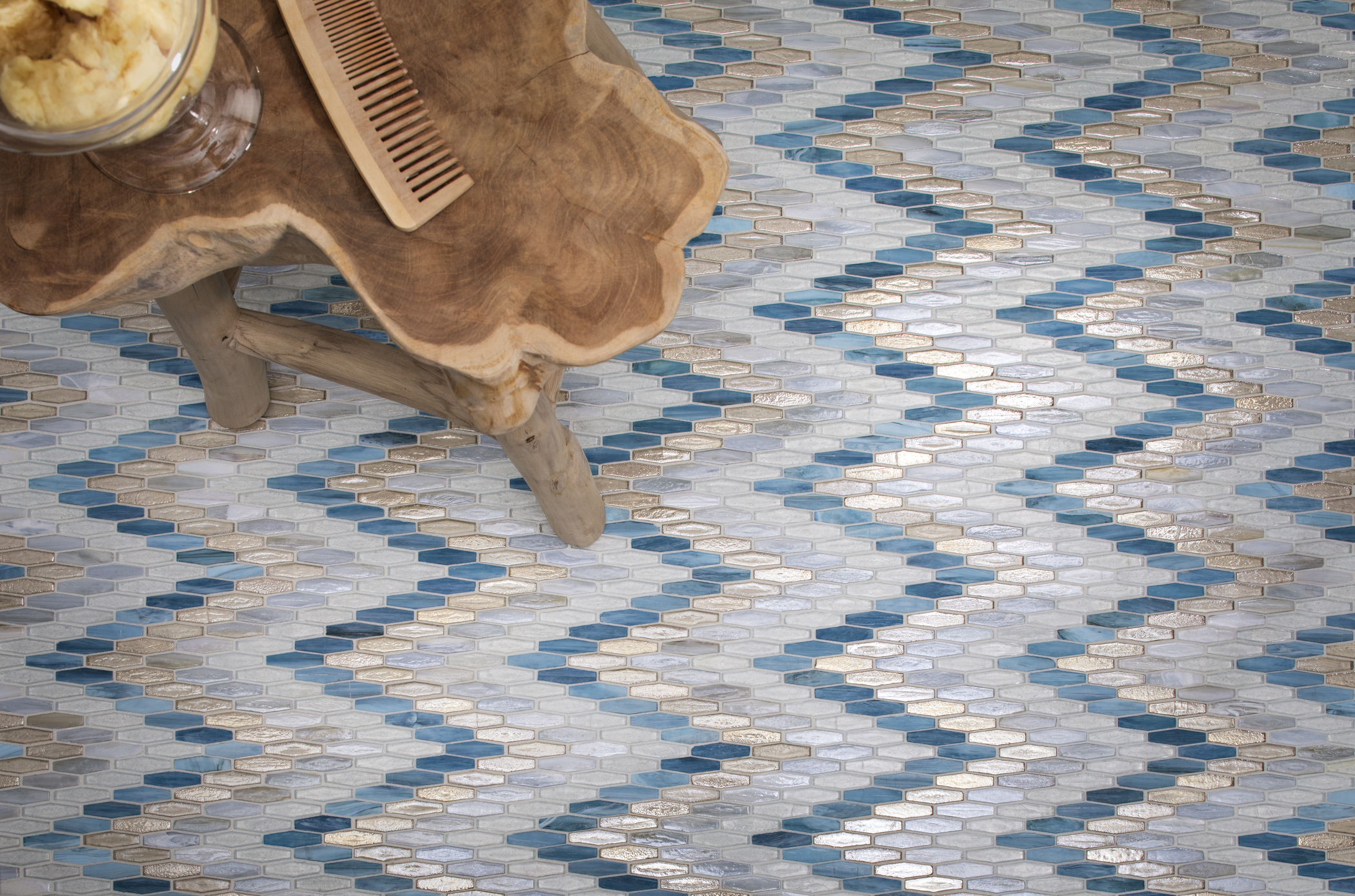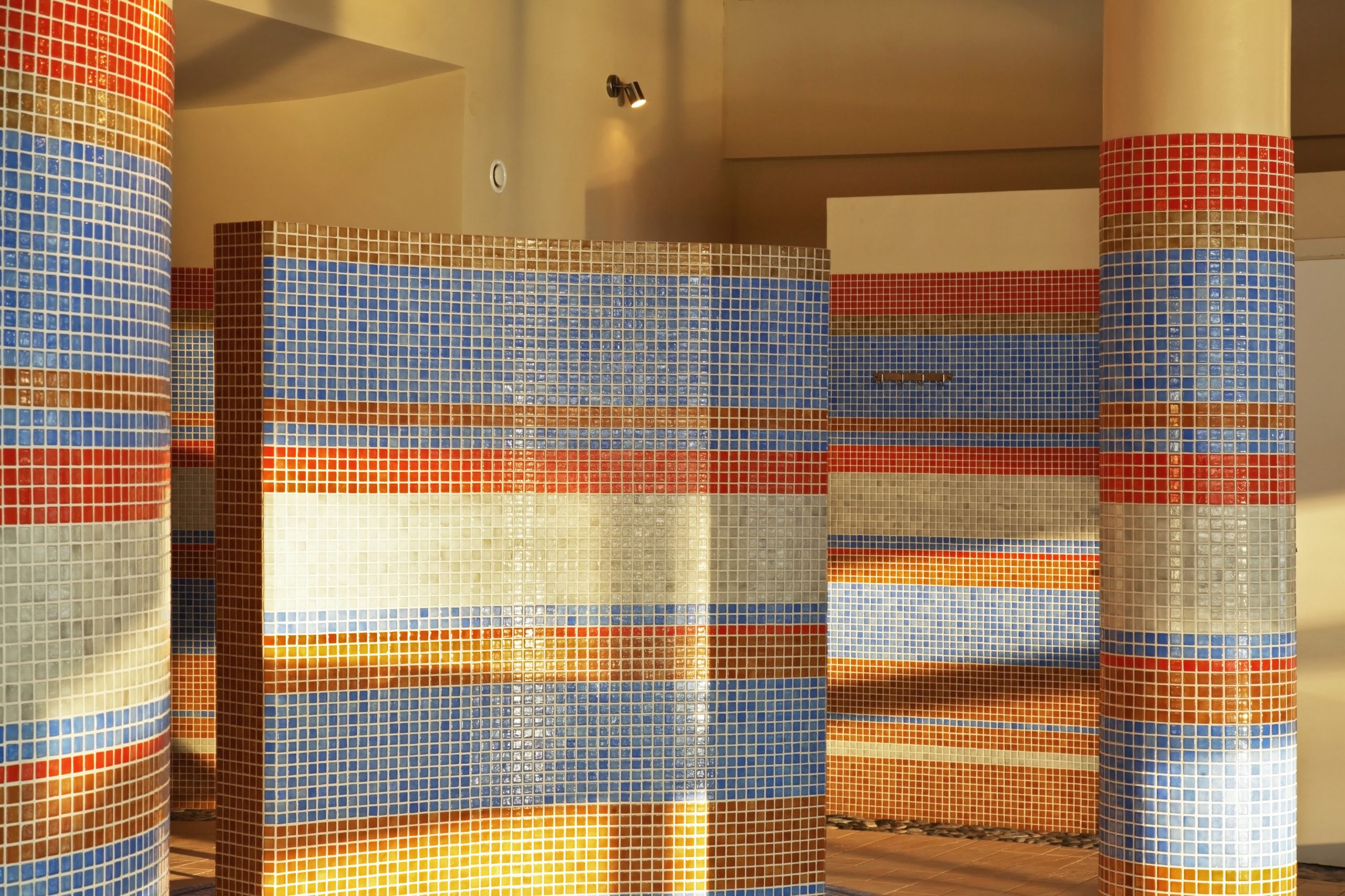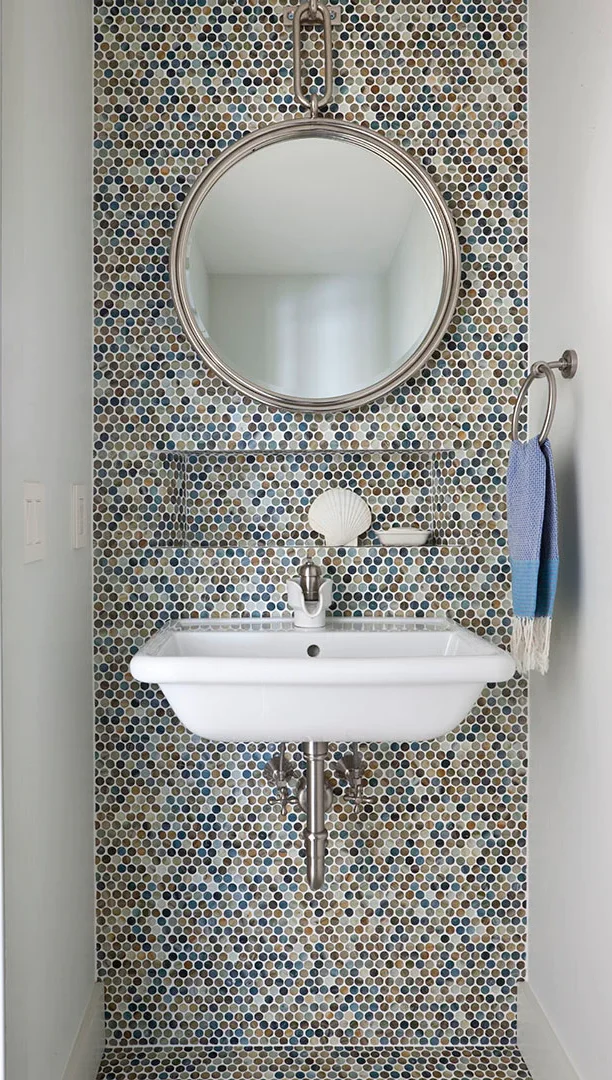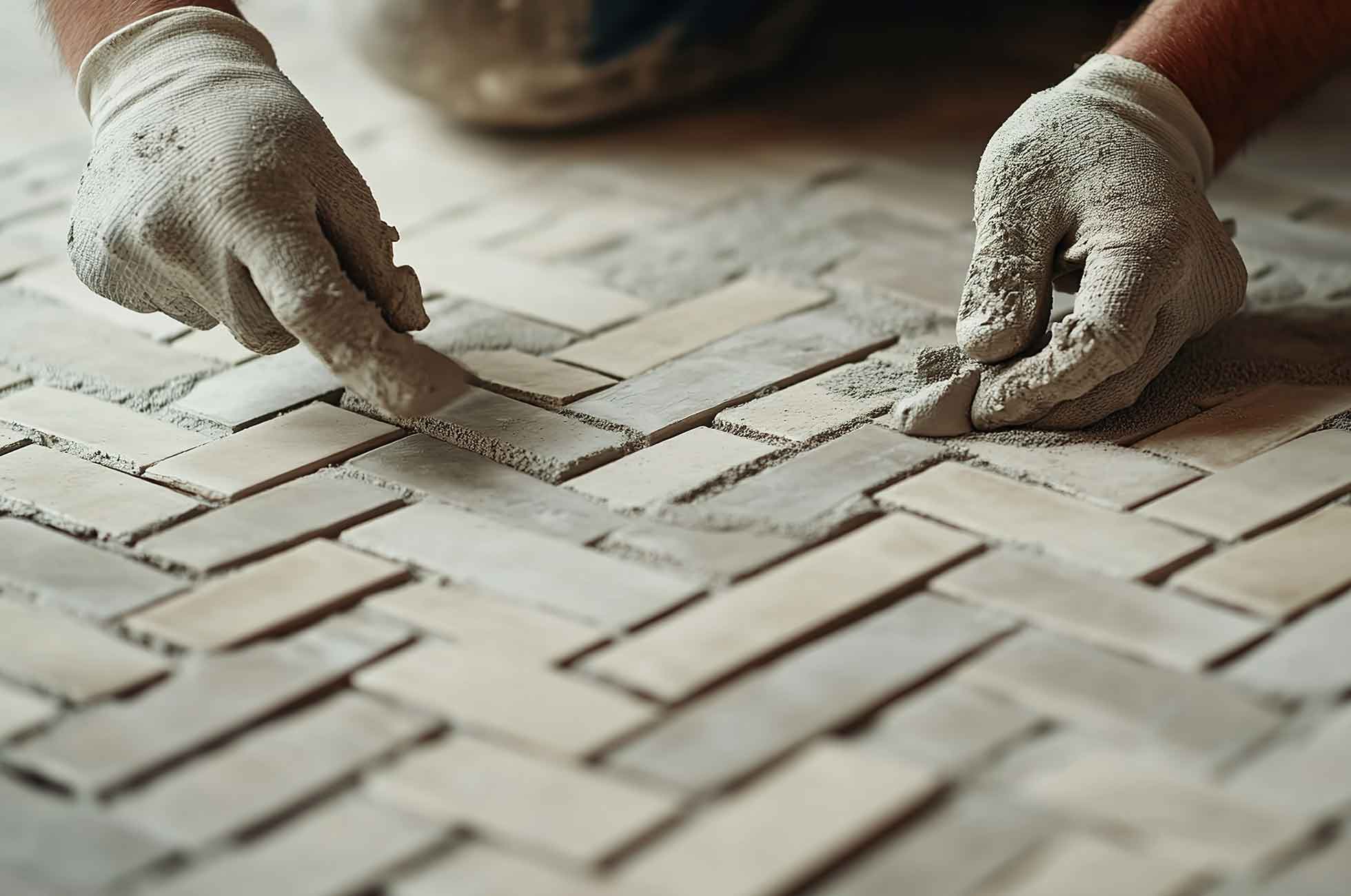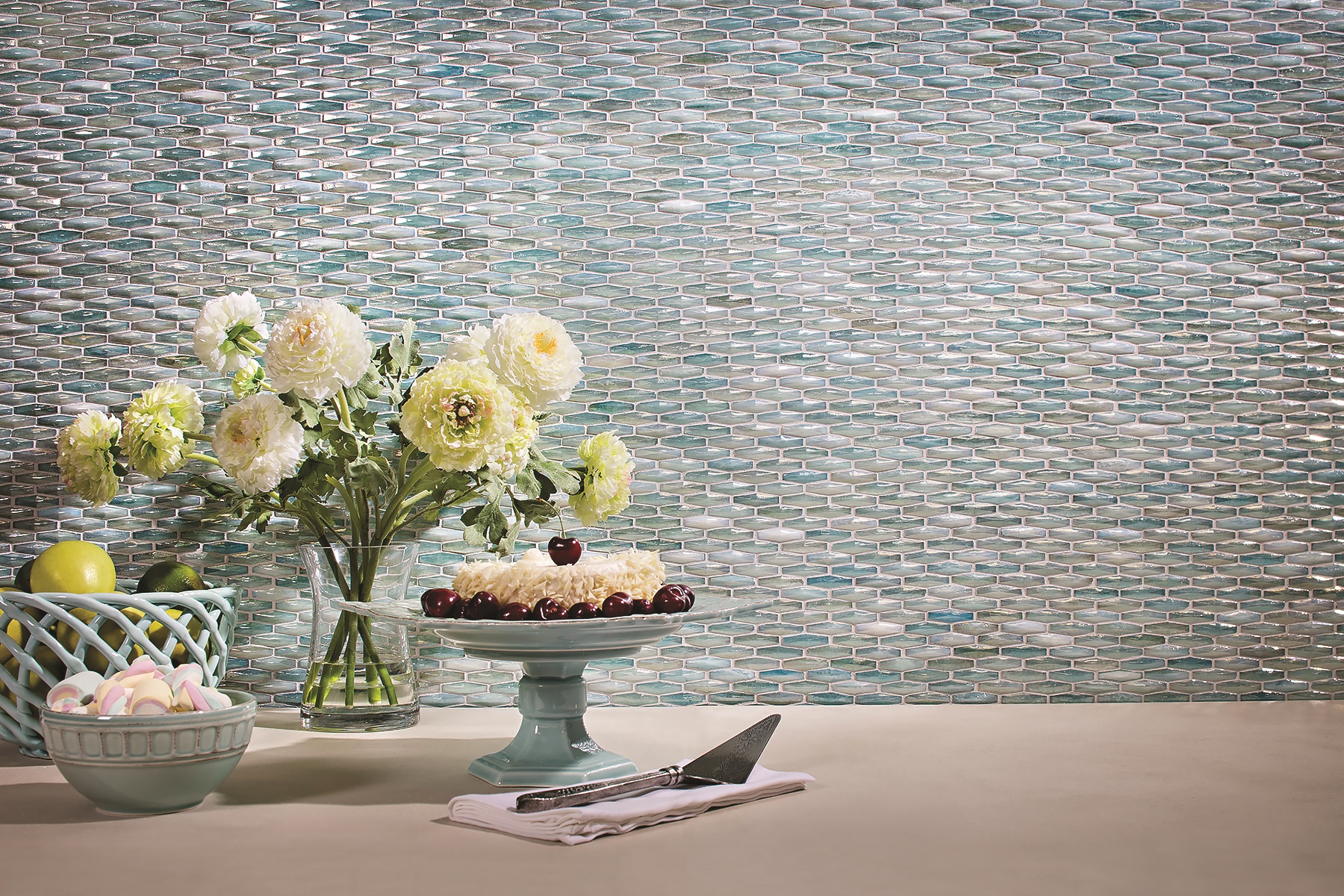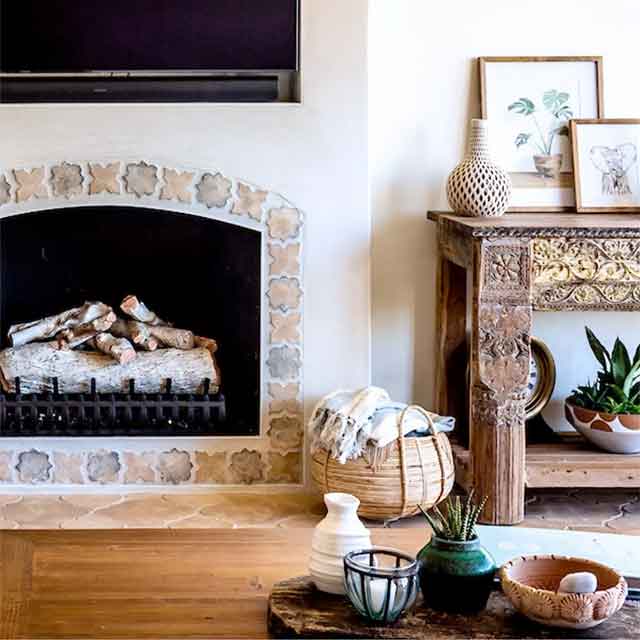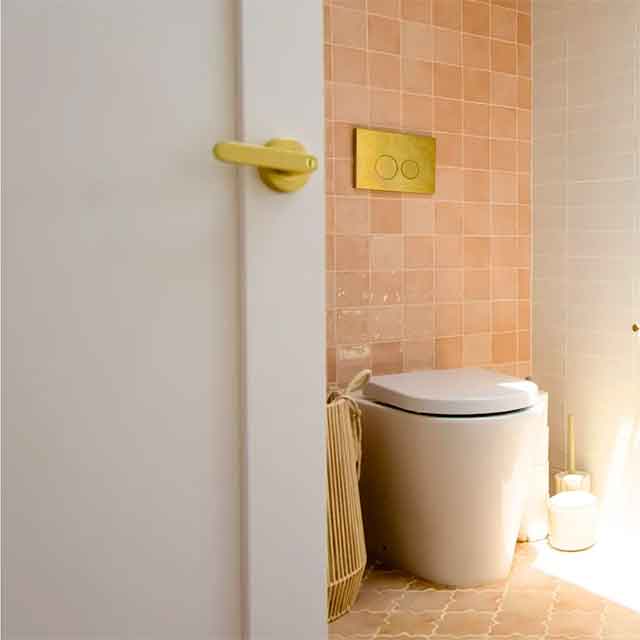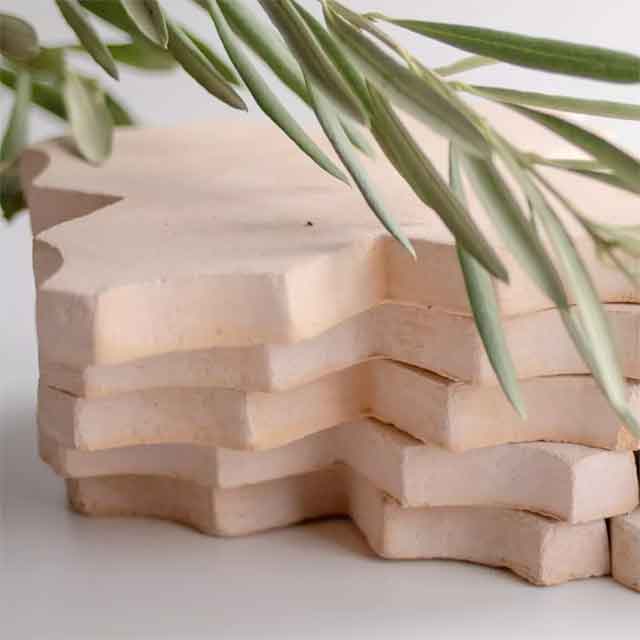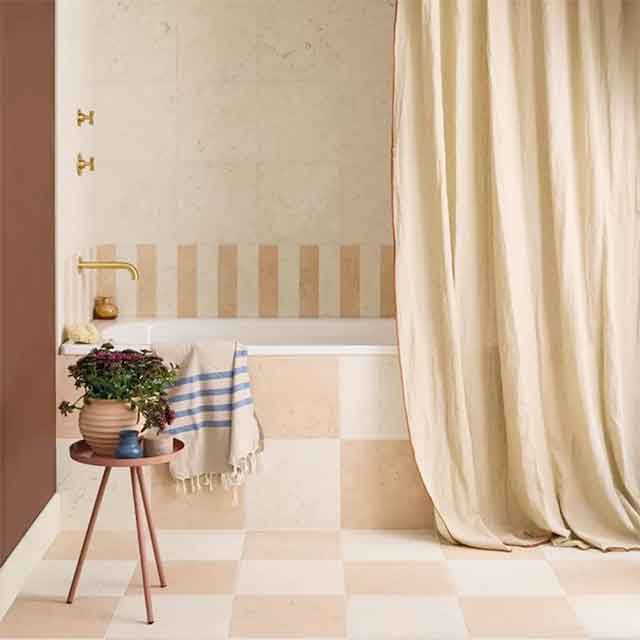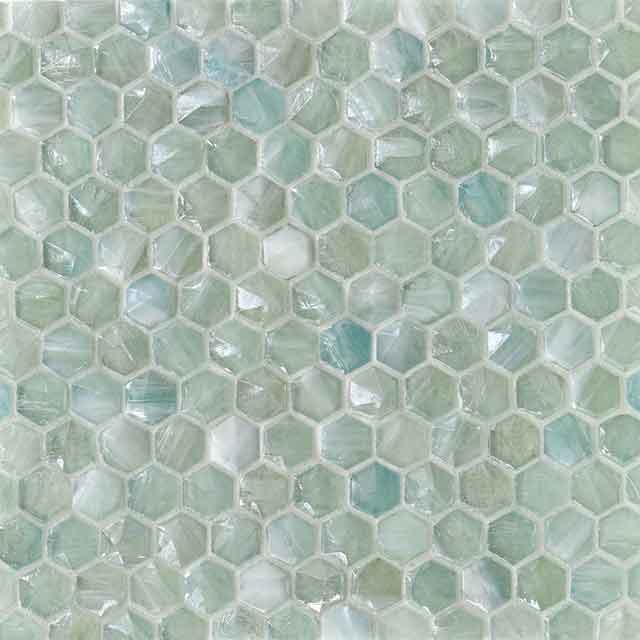July 21, 2025
STUDIO Blog
Surface Studio work with leading interior designers across Australia sharing expert tiling advice, information and related services. Contact us today regarding your next project.
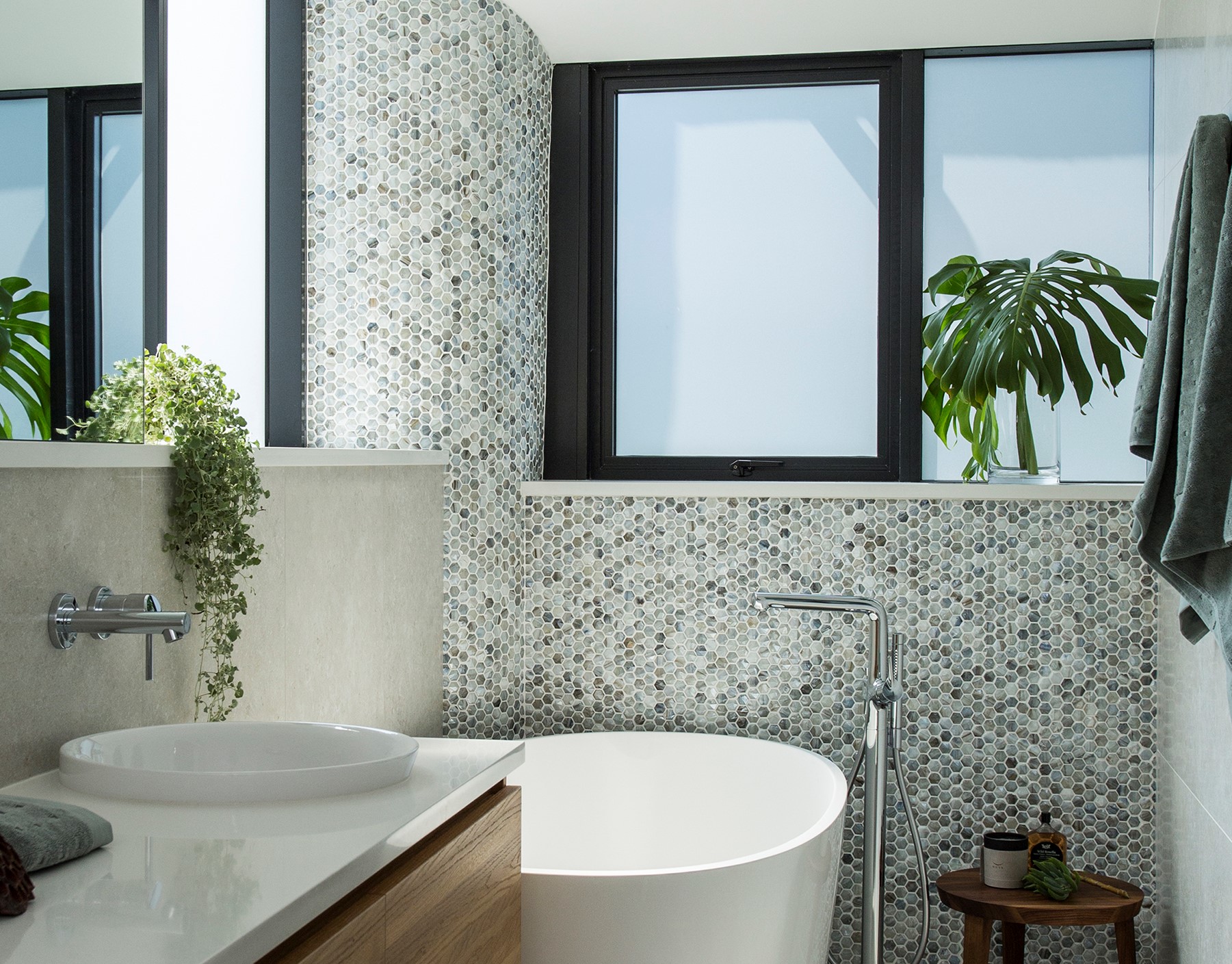
A Guide to Glass: Glass Mosaics in Interior Design
Glass mosaic tiles are one of the most popular interior design choices to add a splash of colour or make a stunning statement. In recent times glass is primarily considered for use in swimming pools however this versatile form of floor and wall decoration has been around for thousands of years. Glass mosaics are used beautifully to decorate private homes, public spaces, hospitality venues, and religious buildings. With their stunning colours, textured surfaces, and versatility, they can add a touch of sophistication and elegance to any design space.
Glass mosaic is made from pieces of glass cut into small squares, rectangles, or other shapes, and then arranged in patterns individually or in a sheet format. This sheeting makes it easy to install the tiles, as they can be cut to size and then applied as a single sheet.
First and foremost, glass mosaic tiles are incredibly versatile. They come in a wide range of colours, shapes, and sizes, making them suitable for any style or taste. From vibrant, bold colours to soft, neutral hues, there’s a glass mosaic tile for everyone. This versatility also means that you can use glass mosaic tiles in a variety of ways, from creating eye-catching splash-backs in the kitchen to accenting walls and floors in the bathroom. They’re also great for creating interesting focal points in other rooms, such as hallways, entryways, fireplaces and bar fronts. A personal favourite is to use glass mosaic as an accent to natural stone. The texture and finish adds a beautiful counterpoint to a honed stone surface.
Another great benefit to glass mosaic tiles is that they’re very easy to clean and maintain. Unlike other types of tiles, such as ceramics or natural stone, glass mosaic tiles have minimum porosity and don’t absorb liquids or stains. This makes them perfect for use in areas where hygiene is of utmost importance, such as in kitchens, bathrooms and service areas. To keep your glass mosaic tiles looking pristine, simply wipe them down with a damp cloth and mild soap as needed.
One of the most popular design trends in glass mosaic tiles is the use of geometric patterns. These patterns can be simple and understated, or they can be bold and striking, creating a statement in any room. Geometric patterns can be made up of a single colour, or a mix of colours, making them versatile and suitable for a variety of decor styles.
In terms of durability, glass mosaic tiles are tough and long-lasting. They’re made from high-quality glass that is heat and scratch-resistant, making them suitable for use in high-usage areas. They’re also moisture-resistant, making them ideal for use in wet areas like bathrooms and showers. Additionally, glass mosaic tiles are fire-resistant, which can be a valuable safety feature in kitchens and fireplaces.
The History of Glass Mosaic Tiles
The history of glass mosaics dates back to ancient times when glass was first invented. However, it wasn’t until the 4th century AD that mosaic art reached its peak in the form of Byzantine and Romanesque art. These intricate designs were made by arranging small glass pieces into detailed patterns, creating vibrant and colourful images. Over time, the technique evolved, and artists began casting glass pieces to create more complex designs and 3D effects.
The earliest known glass mosaic tiles date back to ancient Mesopotamia around the 3rd millennium BCE. These mosaics were used to decorate palaces and temples, and they were made from pieces of coloured glass, stone, and shell. Over time, glass mosaic tiles spread to other parts of the world, including ancient Greece and Rome. The Greeks and Romans used glass mosaic tiles to decorate their homes and public buildings, and they became known for their intricate designs and vivid colours.
In the Middle Ages, glass mosaic tiles were used to decorate churches and cathedrals. These mosaics were often religious in nature and depicted scenes from the Bible or the lives of saints. During the Renaissance, glass mosaic tiles became even more popular and were used to decorate palaces, public buildings, and even private homes. The art of glass mosaic tile making reached its peak in the 19th and 20th centuries when new techniques were developed that made it easier to produce glass mosaic tiles in large quantities.
The popularity of glass mosaic tiles has only increased over the years, as they offer a range of benefits and advantages over other forms of floor and wall coverings. These include:
Durability: Glass mosaic tiles are highly durable and resistant to scratches, stains, and other forms of damage. This makes them ideal for use in high-traffic areas such as kitchens and bathrooms, as well as in areas that are exposed to water and moisture, such as showers and pools.
Aesthetics: Glass mosaic tiles come in a wide variety of colours, shapes, and designs, which makes it easy to find a style that suits your project. From bold and vibrant patterns to subtle and understated designs, there is a glass mosaic tile to suit nearly every design style.
Easy to Clean: Glass mosaic tiles are easy to clean and maintain, making them ideal for use in areas that require regular cleaning and upkeep. Simply wipe them down with a damp cloth or sponge, and they will look as good as new.
Low Maintenance: Glass mosaic tiles are low maintenance, as they do not require special cleaning products or procedures to keep them looking their best.
So, where can you use glass mosaic tiles in your design? The many advantages of glass mosaic tiles make them an ideal choice for a wide range of floor and wall coverings, including:
Splashback: A kitchen or bar splashback is a great place to use glass mosaic tiles, as they offer a functional and stylish solution to protect your walls from spills and splashes. They are also easy to clean and maintain, making them ideal for use in this area of the home or restaurant.
Bathrooms & Showers: Glass mosaic tiles are ideal for use in showers, as they are resistant to water and moisture, making them a durable and practical solution for this area of the home. They also come in a wide range of colours and designs, so you can find a style that suits your bathroom décor by adding a touch of luxury and style
Pools & Water Features: Glass mosaic tiles are also a popular choice for use in submerged application, as they are resistant to water and UV rays, and come in a wide range of colours and designs that can help to add a touch of style and sophistication to your pool area.
Fireplaces: Glass mosaic tiles are also a popular choice for use in fireplaces, as they offer a stylish and durable solution that can help to create a warm and inviting atmosphere in this area of the home.
Feature areas: Glass mosaics are ideal for creating interesting focal points in hallways, entryways, and other spaces. They can add an element of drama and style to an area you are wishing to highlight.
When it comes to choosing glass mosaic tiles for your design, there are several factors to consider, including:
Colour: The colour of your glass mosaic tiles will play a significant role in the overall look and feel of your space. It is important to choose a colour that compliments your decor and enhances the aesthetic appeal of your room.
Size: The size of your glass mosaic tiles will also have an impact on the look and feel of your space. Smaller tiles can create a more delicate and intricate look, while larger tiles can make a bolder statement.
Texture: Glass mosaic tiles come in a range of textures, from smooth and glossy to rough and textured. The texture you choose will have a significant impact on the look and feel of your space, so it is important to choose a texture that is appropriate for your space.
Design: Glass mosaic tiles come in a wide range of shapes and styles, from simple and understated geometrics to bold and intricate configurations. It is important to choose a design that suits your personal style and the overall look and feel of your space. You can also opt for custom designs if you want to create a truly unique and personalized look.
Installation: Glass mosaic tiles are relatively easy to install, but it is important to choose a professional installer who has experience and expertise in working with this type of tile. A professional installer will be able to ensure that your tiles are installed correctly and that they look beautiful and last for many years to come.
How Glass for Mosaic Tiles are Made
Glass mosaics can be made in a variety of colours, including clear, opaque, and translucent. To create coloured glass mosaic tiles, cast glass is used, or glass is enamelled or painted to achieve the desired hues. Some glass mosaic tiles are also made from recycled glass, which is melted down and then formed into tiles. The main production techniques for quality glass for mosaics are:
Cast Glass:
Cast glass mosaic is a stunning art form that involves the use of glass and minerals to create beautiful, intricate colours. The technique involves casting individual streams of coloured glass in a mould which produces stunning blends of colours and opacity. The result is a unique and strikingly beautiful and durable work of art.
The process of creating a cast glass mosaic piece involves several steps. First, the artist must design the pattern and choose the colours and textures of the glass pieces. Then, the glass is melted in a furnace and poured into moulds to create individual pieces. Once the glass pieces have cooled and hardened, they are removed from the mould and polished to create a smooth surface. Finally, the individual pieces are assembled, using an adhesive material to create the final design.
Enamelled Glass
Enamelled glass is a type of glass that has a layer of coloured or opaque enamel fused onto its surface. This process involves heating the glass to a high temperature, then applying a powdered enamel coating to the surface and firing it in a kiln to melt and fuse it to the glass.
Enamelled glass is valued for its decorative qualities and can be used in a variety of applications, such as creating stained glass windows, decorative vases, or even functional items like cookware or light fixtures. The enamel coating can be applied in a variety of patterns and designs, making it a popular choice for artistic and decorative glasswork. Additionally, enamelled glass is often more durable and scratch-resistant than untreated glass due to its protective coating.
How mosaic designs are achieved
So, how are the glass mosaic designs made? Glass mosaic tiles are typically created by cutting pieces of coloured glass into small, uniform shapes. These shapes are either individually handset or arranged in sheets of mesh backing, paper face or dot mount to form intricate designs. The sheeting process makes it easy to install the tiles, as you can simply apply them to a surface as a single unit as opposed to installing individual tiles, which can be quite labour-intensive.
In terms of installation, by taking care and utilising a few simple techniques, glass mosaic tiles can be very easy to work with. They can be cut to fit any shape or size, making them suitable for use in a wide range of spaces. They can be installed on a variety of surfaces, including walls, floors, and even furniture.
The Benefits of Glass Mosaic Tiles
Glass mosaic tiles have many benefits, making them a popular choice for decorating homes and public spaces. One of the biggest benefits of glass mosaic tiles is their durability. Glass is a tough material that can withstand a lot of wear and tear, making glass mosaic tiles ideal for use in high-traffic areas.
Another benefit of glass mosaic tiles is their versatility. Glass mosaic tiles come in a wide variety of colours, sizes, and shapes, so you can create just about any design you can imagine. They can be used to create a subtle, understated look or a bold, eye-catching statement. They can also be used to create a variety of patterns, from simple geometric shapes to more complex, decorative designs.
Glass mosaic tiles are also easy to clean and maintain. Unlike other types of tile, glass mosaic tiles don’t absorb dirt and grime, making them a great choice for use in areas like kitchens and bathrooms. They can be cleaned with just a damp cloth, and they won’t stain or discolour over time.
Glass mosaic tiles are also environmentally friendly. Glass is a recyclable material, so when you choose glass mosaic tiles, you’re helping to reduce waste and conserve natural resources. Additionally, glass mosaic tiles can be made from recycled glass, which is a great way to give old glass a second life.
Glass mosaic tiles are a versatile and stylish choice for floor and wall coverings that offer a range of benefits and advantages over other forms of tiling. From their durability and resistance to water and moisture to their ease of maintenance and the wide range of colours, sizes, textures, and designs available, glass mosaic tiles are a great option for anyone looking to enhance the look and feel of their space. With careful consideration of your personal style and the overall look and feel of your space, you can find the perfect glass mosaic tiles to suit your needs and create a beautiful and functional space that you will love for years to come.
Do you have any questions about how you can best use glass mosaics? Simply call or email and we will be happy to assist you with your enquiry.
READ OUR Articles

